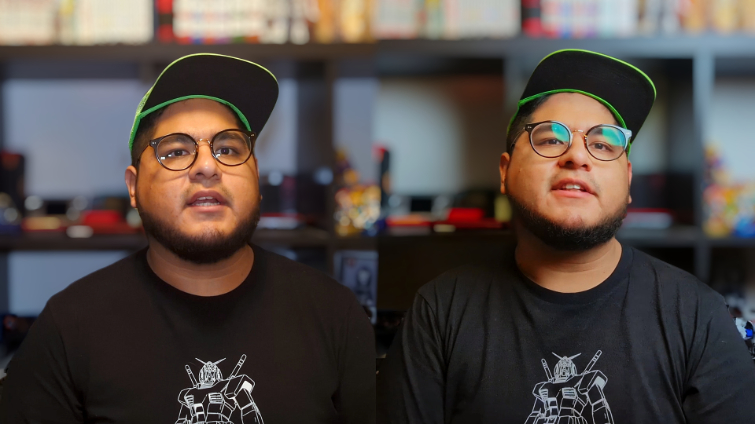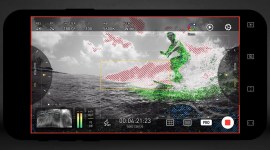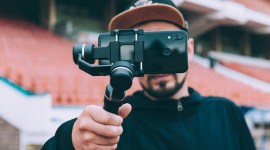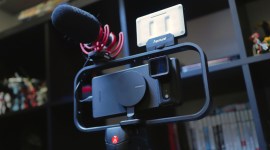
Amaran COB 60x: The Gear Upgrade I Didn’t Know I Needed
Like many of you, I’m always looking for the next piece of gear to make the most significant difference in my videos. I’m talking lenses with huge apertures, crisp microphones, or a camera with a bigger sensor and more bells and whistles. Of course, any of these upgrades can significantly impact the quality of your videos, but when you’re on a budget, the most crucial aspect of any gear purchase is what will give you the best return for your money.
Until recently, I thought I needed a new camera, but I found that I needed a better lighting setup. Enter the Aputure Amaran COB 60x, a formidable LED studio light in a small package, which is everything a creator on a budget could ask for.
Amaran COB Models and Pricing
The COB 60x is a point-source LED light priced at $200. It’s one of the most recent products in Aputure’s Amaran line of creator-focused lights. In addition to the COB 60x, Aputure also offers a more affordable model. The $170 COB 60d is nearly identical to the 60x, but the $30 price difference comes down to the 60d having a set color temperature of 5600K. While the 6ox has a range of color temperatures.
The tradeoff is that the 60d has a higher maximum brightness. For my use case, though, the COB 60x’s color temperature range is very much worth the extra.
With a color temperature range of 2700K-6500K, you can use the light for warm and cool lighting, giving you a lot more value for your money. When set to 5600K (daylight) and used with the included reflector attachment, the COB 60x can output 35,700 lux from a 1m distance. The light is rated as having a CRI (Color Rendering Index) of 96, meaning it can accurately portray the color of illuminated objects — CRI tops out at 100, so 96 is quite good. The COB 60x’s display lists the current color temperature and brightness, which can be adjusted via the knob or the Bluetooth app.
Power and Casing
The number “60” in the title refers to the power output of the light. The actual power output is 65W — close enough. There are two ways to power the light; with an AC adapter or batteries. The AC adapter is included, and at around 7m (23 ft), it’s more than long enough for my needs. Also included is a battery adapter with a V-mount, which uses two Sony L-series NF-P batteries.The battery mount is one of the best features on the COB 60x, especially if you’re shooting remotely — it did wonders for me.

Speaking of portability, the COB 60x comes packaged in a surprisingly-hard foam case with a handle and two latches to keep the contents secure. Inside the case are cutouts for the light module and other accessories, such as the hyper reflector, AC adapter, battery adapter, and mounting bracket. The case was an unexpected bonus, and though made of foam, it looks and feels sturdy enough to last a long time.
Must-have upgrade
For $200, the COB 60x offers a lot of value. It’s powerful, versatile, portable, and just what I needed bring my studio setup from amateur to pro. After using the on-camera Aputure Amaran AL-M9 for years — here are more on-camera light recommendations — the difference between the tiny pocket light and the COB 60x was night and day. While an on-camera light is still a valuable piece of gear to have, there’s no denying the impact a studio light has. You can see it for yourself in the video below. I shot the first part with the AL-M9; the second part with the COB 60x.
I had to shoot the second part twice because I underestimated how powerful the COB 60x is. At 80% brightness, it proved too bright, resulting in the footage being blown out everywhere. It looked much better when I reshot it at 50% brightness, though I still had to tone down the highlights slightly.
Optional Upgrades
I decided to get the most out of the COB 60x by purchasing a Neewer C-stand ($135), a softbox diffuser from Smallrig ($110), and a pair of NF-P970 batteries ($50). Altogether, I spent nearly $300, but it was worth it.
Without the C-stand, I wouldn’t have been able to place the light so high up. A huge advantage to softening the lighting. If I had used the included reflector instead of the softbox–the light wouldn’t have looked as soft either. I recommend picking up a decent c-stand and a softbox, but the batteries are entirely optional.

In my case, the batteries felt just as necessary because the walk-in closet I use as a makeshift studio lacks wall sockets. The AC adapter is long enough to plug in outside the room, but I preferred having fewer cables. The batteries give you the freedom to take the light anywhere.
Simple Set-Up
Setting everything up was painless. The 1/4″ -20 mounting pin and stand adapter made it a breeze to attach the light to the C-stand. Thanks to the V-mount on the light, I quickly attached the battery adapter to the COB 60x.
The softbox diffuser slid right into the Bowens mount, which accepts a wide range of diffusers and reflectors. Then, I used the knob to dial in my preferred settings. Pressing and holding the knob alternates which setting you can adjust. Turning it allows you to make small increments to the brightness or color temperature settings while pressing it makes big jumps. For example, pressing the knob will change the color temperature from 4300K to 5600K.
While the knob is the sole method of manually controlling the light, apart from the on/off switch, you can download the Sidus Link app and control the COB 60x via Bluetooth. Apart from adjusting brightness and color temperature settings, the app lets you turn on lighting effects, such as strobe or fireworks, or sync up to 100 compatible lights. You can do a lot within the app, but I found the simplicity of changing the brightness to be the most useful. I liked this feature above the others because, like most solo creators, I don’t have someone behind the camera to monitor everything. Wireless control allowed me to stay on my mark whenever I had to adjust a setting. It also makes it possible to see adjustments in real-time via a monitor, which beats making a change on the light and then playing back the footage on the camera after.
Very Little to Complain About
There’s hardly anything negative to say about this product. I didn’t encounter anything that put me off completely, which is a testament to Aputure’s design. But there were a couple of small things I should mention. The cooling fan is one of them, and the battery functionality is another. The app experience was also an issue, though to a smaller extent.
Fan Noise
Fan noise is an issue with this light. While not jet-engine loud, your microphone will pick it up if placed near the light, especially if using a sensitive condenser microphone. Setting a high-pass filter on the Rode VideoMic Go II helped while recording, and it’s easy to deal with in post with a noise gate.
Still, fixing fan noise is an extra step that I’d rather not deal with. Don’t get me wrong, the fan is necessary. The light would overheat without it, but I’d have liked a way to adjust fan curves, instead of having the fan turn on immediately. To be fair, that’s asking a lot from a product at this price point. Considering everything else it offers, I can live with fan noise.
Battery Adapter Weight
The battery adapter weight was another issue. Depending on which batteries you use, the battery adapter can be as heavy as the light itself. In my testing, using the battery adapter caused the light to tilt completely toward the right, where the batteries are attached. This happened whenever the light was tilting downward. Later, I realized it stopped tilting when equipped with the diffuser, with the extra weight of the accessory balancing out the weight of the batteries.


Because I could work around it, it’s more of a hassle than an actual problem. I also don’t plan on using the light without the softbox diffuser, so It’s unlikely I’ll experience it often. Though, if you plan on using the reflector or a lighter diffuser, this could be more of an issue for you.
But that’s not the only problem with the battery. I didn’t encounter this issue, but some users online complained the batteries can’t power the COB 60x for extended periods when set to full brightness. Although lowering the brightness apparently fixes the problem, it’s nonetheless a knock against the light’s portability.
Sidus Link App Issues
Finally, the Sidus Link app doesn’t have the best user experience. Though it does connect to the light very quickly, and adjustments happen instantly, navigating the app is a mess.
The sheer number of tabs, settings, sliders, and abbreviations made my head spin. I figured out how to do what I wanted, but the lack of a tutorial will make this a nightmare if you’re not the most tech-savvy. The app could do with a UX update, in my opinion. To be clear, the app works great–I am just not a fan of the UI.
Budget king
Besides the few issues I came across, I found the COB 60x to be a well-made product with a shocking amount of features for the price. Buying several accessories to tap into the light’s full potential is not ideal when you’re on a budget, but you’re unlikely to find another light at this price point that offers you as much. Godox’s cheaper 60W COB light, for example, lacks much of what makes the Aputure Amaran COB 60x special.

Small as it may be, the size of the COB 60x doesn’t equate to its performance. This thing can output some serious beams of warm and cool light, especially when equipped with a reflector or diffuser. At half brightness, the COB 60x was enough to light the scene perfectly most of the time. And because it’s wireless and battery-powered, I can take it anywhere, including my makeshift studio closet. The included foam case, as well as the accessories inside, provide even more value. After using the COB 60x, it’s clear a point source light is exactly what I needed to elevate my videography by a few notches. What I can’t believe is that it took me this long to get one and that it’s a $200 light, not a more expensive one, that did the trick.
For more gear reviews, check out the following articles:




